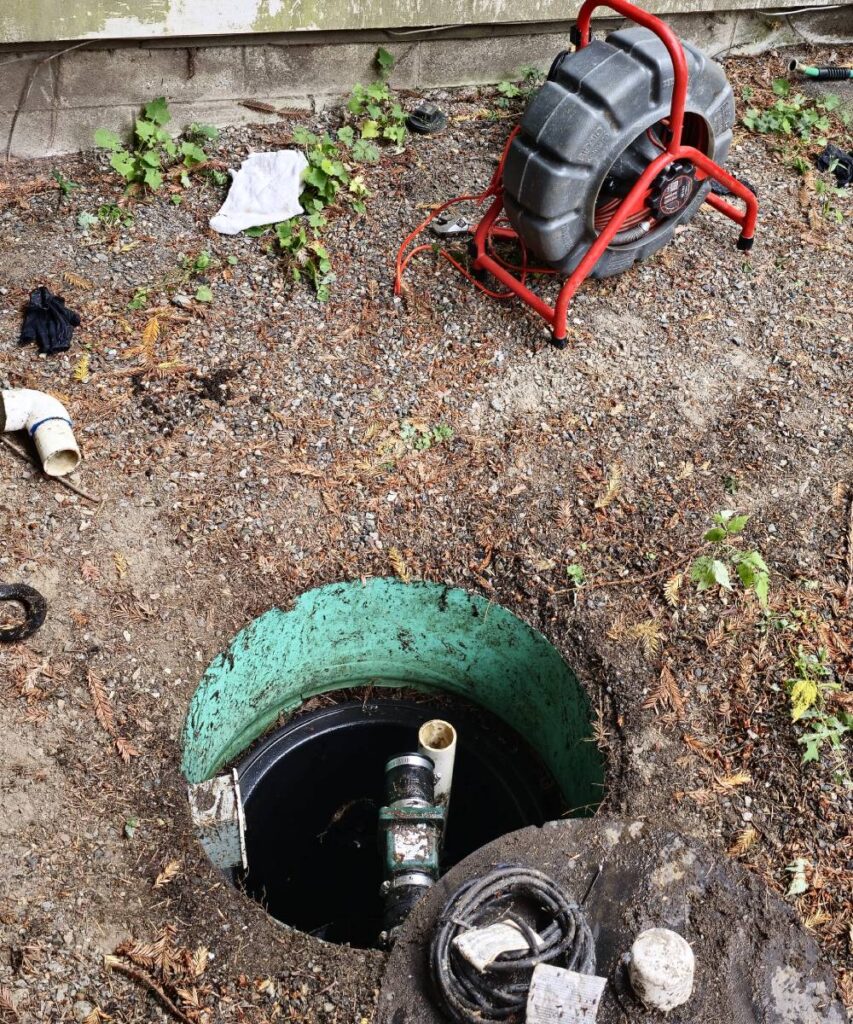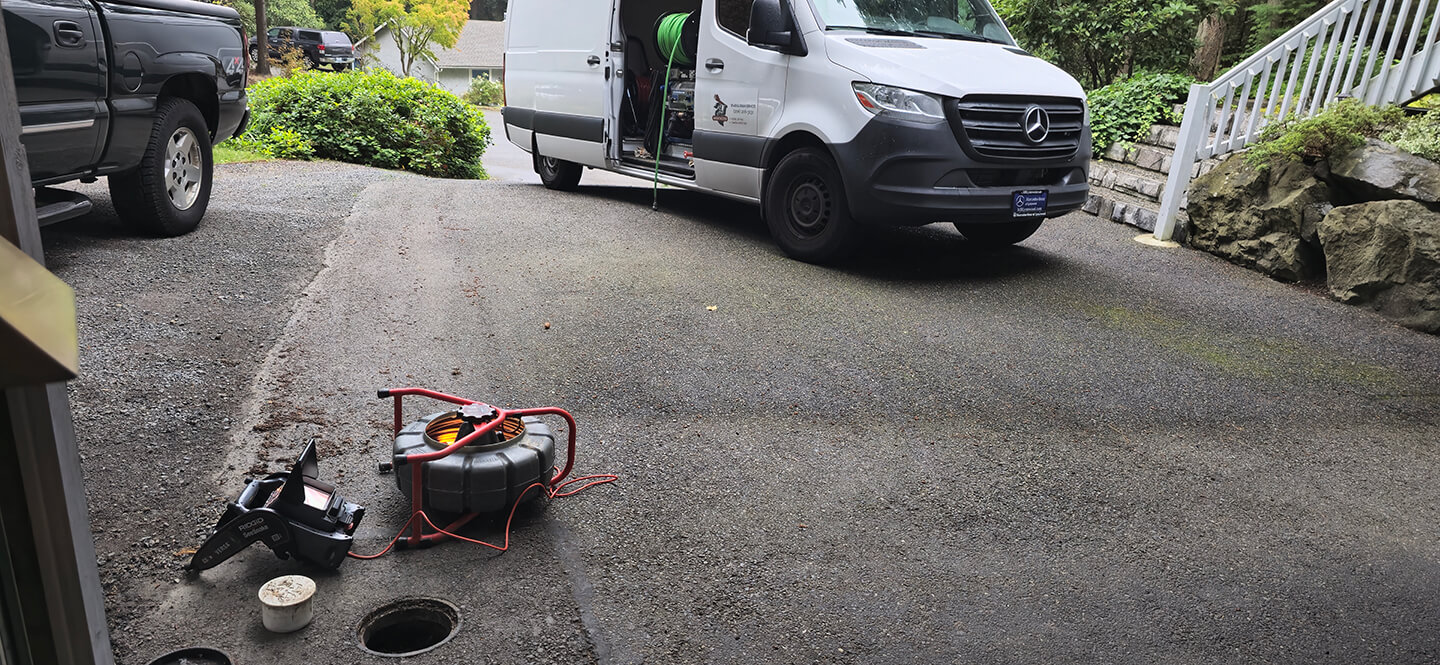Seattle’s heavy rain, clay soil, and aggressive tree roots silently threaten underground sewer lines—often with no warning until disaster strikes. This in-depth guide from KnightRooter reveals how proactive sewer inspections using advanced camera technology can detect hidden issues early, preventing costly backups, yard destruction, and health hazards. Through real Seattle case studies, a step-by-step inspection timeline, seasonal scheduling tips, and a clear comparison of proactive vs. emergency outcomes, you’ll learn exactly how to protect your home before it’s too late.
Why Seattle’s Environment Makes Proactive Sewer Checks Essential
Seattle’s climate and soil create the perfect storm for hidden sewer problems. Heavy rainfall, dense clay, and mature tree canopies work together to stress underground pipes—often without any warning until it’s too late.
KnightRooter Lead Technician (12+ years in Seattle): “We see the same pattern every fall: roots grow aggressively in summer, then winter rain pushes water into tiny cracks. One heavy storm and the line collapses.”
Clay Soil + Heavy Rain = Silent Pipe Stress
Seattle’s glacial till clay expands when saturated and contracts when dry. This constant movement creates micro-gaps in pipe joints—entry points for roots and exit points for soil.
Tree Roots in Older Neighborhoods
In Capitol Hill, Queen Anne, and Ballard, mature trees send roots 50+ feet in search of water. A hairline crack in a 60-year-old pipe is all it takes for invasion to begin.
Seismic Micro-Cracks: The Hidden Threat
Western Washington experiences small earthquakes regularly. Even a 3.0 tremor can create invisible fractures that worsen over time.
The Real Risks of Waiting for a Backup
Reactive plumbing means waiting for disaster. The consequences go beyond inconvenience:
- Yard and driveway destruction from emergency excavation
- Indoor flooding with contaminated water
- Health hazards from sewage exposure
- Permanent property disclosure on future sales
One backup can turn a manageable issue into a week-long nightmare.

How Proactive Inspections Work: Step-by-Step Timeline
No digging. No mess. Just clarity in under an hour.
Day 0: Booking & Preparation
- Schedule online in 60 seconds
- Locate your cleanout (we’ll guide you—usually a 4″ cap in basement or yard)
- Clear a 3-foot radius around it
Day 1: The 45-Minute Camera Scan
- High-resolution waterproof camera inserted through cleanout
- Live video feed + full recording
- Technician identifies:
- Root intrusion
- Grease buildup
- Pipe bell offsets
- Cracks and fractures
Day 2: Your Digital Report
- Interactive map of your entire sewer line
- Color-coded priority system:
- Red: Urgent attention needed
- Yellow: Monitor
- Green: Healthy
- Video clips and photos embedded
- Clear next steps (if any)
Real Seattle Case Studies: Prevented vs. Unprevented Disasters
Case 1: Ballard Craftsman (Proactive Success)
- Home: 1920s bungalow
- Finding: Root mass at 42 feet, 30% blockage
- Action: Scheduled hydro-jetting + spot lining
- Outcome:
- Zero yard damage
- No backup during record 2024 rains
- Home sold 18 months later—no sewer disclosure needed
Case 2: West Seattle Rambler (Emergency Failure)
- Home: 1960s split-level
- Trigger: Total collapse under driveway after heavy rain
- Result:
- Sewage in garage
- 5-day excavation
- New concrete driveway
- Health department involvement
Visual Comparison: Before/After yard impact (#image-5)
When to Schedule Your Proactive Inspection
Timing matters. Seattle’s seasons dictate the best windows.
- Fall (September–November): Pre-Rainy Season Prep
Roots grow fastest in late summer. Catch intrusions before the first deluge hits. - Spring (March–May): Post-Winter Recovery
Clay soil contracts after freeze-thaw cycles. New cracks appear—perfect time to scan.
Immediate Red Flags (Don’t Wait):
- Slow drains in multiple fixtures
- Gurgling sounds when appliances drain
- Unexplained wet patches or extra-green grass in yard
- Sewer odor after rainfall
Proactive vs. Emergency: Disruption & Recovery Comparison
| Scenario | Time Off Work | Yard Damage | Indoor Risk | Recovery Time |
|---|---|---|---|---|
| Proactive Inspection | 2–4 hours | None | None | Same day |
| Emergency Backup | 3–7 days | Full trench | Sewage flood | Weeks |
Explore More Resources
For more information on sewer line maintenance and repair, visit our service pages:
- Camera Inspection Everett
- Camera Inspection Edmonds
- Camera Inspection Seattle
- Camera Inspection bothell
- Camera Inspection Kirkland
- Camera Inspection Lynnwood
- Camera Inspection Woodinville
- Camera Inspection Snohomish
- Camera Inspection Bellevue
AFQ
1. How long does a proactive sewer inspection take?
A: 45–90 minutes total. You can watch the live feed on our tablet.
2. Will my yard be damaged during the inspection?
A: Never. We access through the existing cleanout—no digging required.
3. What happens if the camera finds a problem?
A: You receive a detailed digital report with photos, video clips, and prioritized recommendations. You decide next steps—no pressure.
4. How often should I schedule proactive inspections?
Homes built after 1970: Every 3–5 years
Homes built 1950 or earlier: Every 2 years
After major storms or earthquakes: Immediately
5. Can I be home during the inspection?
A: Absolutely. Most homeowners watch the live feed—it’s fascinating and educational.
For professional and fast drain cleaning Bothell, drain cleaning Seattle, and drain cleaning Bellevue, contact KnightRooter. Our team is ready to provide the best solutions for your drain issues.





No comment yet, add your voice below!